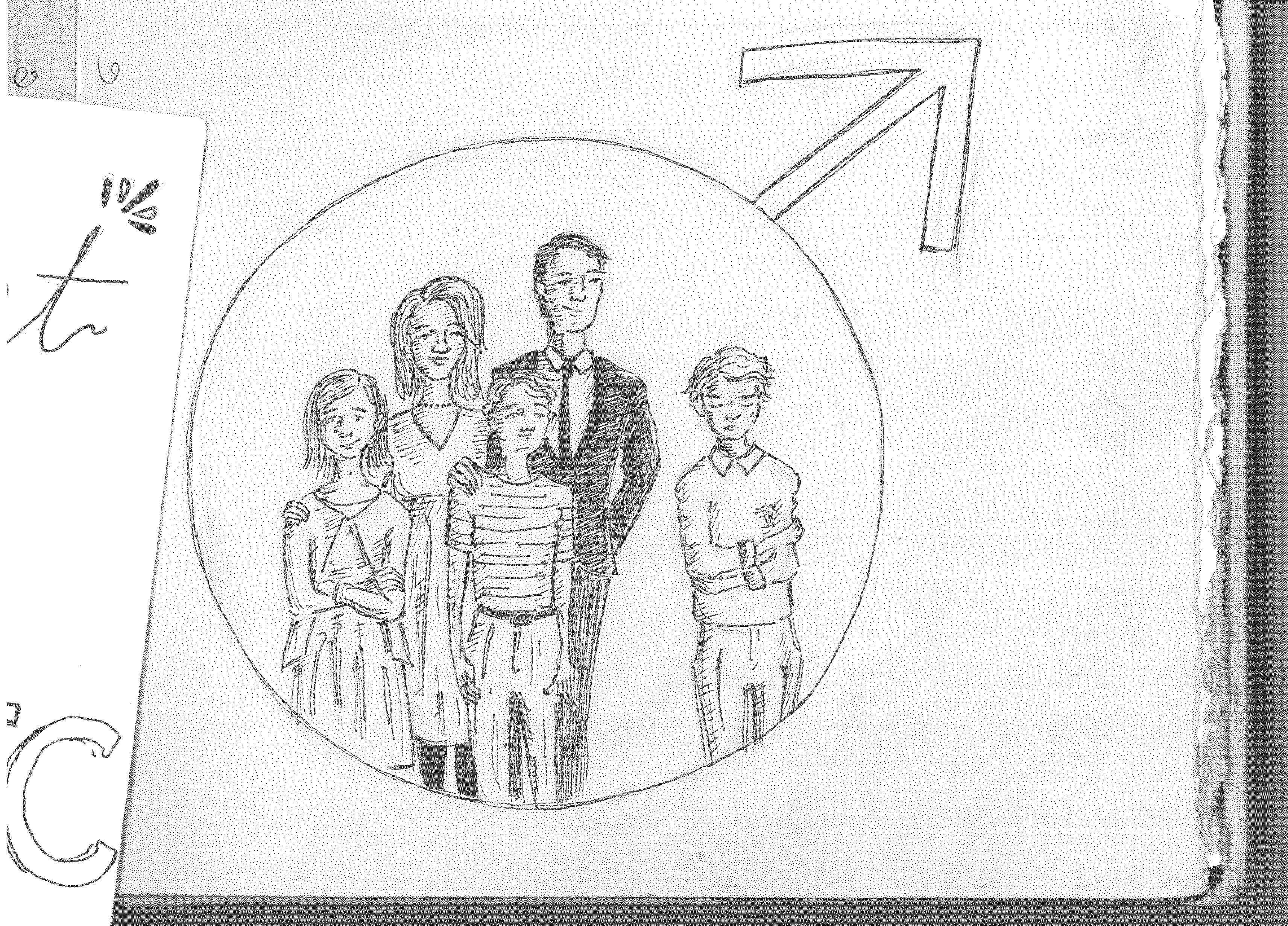he is an uncomfortable but refreshing insight on the pronoun and all that it does and could imply. An artistic collaboration between Winnipeg-born writer Kegan McFadden and New York photographer Nick Kline, the multimedia book recreates a painful but welcome confusion.
This collaborative project consists of twenty textual passages taken from McFadden’s prose series Men, interspersed with photographs from Kline’s Boys’ Shirts, a project which exclusively depicts images of the 1950s-style horizontal striped shirts for boys – monotonous, uniform, and devoid of colour.
Visually, the book presents a bleak outlook on diversity in identity. Given the theme of Kline’s project, a common interpretation of his photographs is that they harken back to the superficially optimistic era of the 1950s, with its televised, idealistic vision of the heteronormative, white nuclear family – ironic because of the book’s queer content. The photographs, digging beneath the superficial optimism, scream of dullness and conformity. They are oppressively grey and rigid, with minimal movement in their mostly straight horizontal stripes. The shirts act both as a metaphor for and an aspect of the standardization of male identity.
Readers who don’t recall the 1950s may not immediately catch this allusion. But even then, the shirts no doubt express uniformity. For those who don’t notice the reference, the shirts appear as the clothing of boys from a fictitious world where gender identity is straightforward, where it is obvious how a ‘he’ should express and relate to himself. Although not the predominant style today, this kind of uniform pattern, along with preconceived expectations of ‘what men wear,’ is all too familiar.
In contrast to the banal shirts, the textual portion of the book expresses diverse male identities that attempt to challenge standardized expectations, with mixed success. McFadden’s poetic narratives can be understood as having either multiple narrators or a single one at different points in his life – it is impossible to tell for sure. While the content expands the connotations of the pronoun ‘he,’ the uniform voice and consequent ambiguity of whether or not there is one narrator or more subverts the book’s own aim by lacking diversity. The seamless narrative voice unfortunately standardizes texts that oppose a uniform understanding of gender identity.
The poems themselves – glimpses of text in a sequence of numbered paragraphs – create an almost overwhelming sense of immediacy. The narrators – or the single narrator – muse about the need to be desired, to be given constant attention, and to return to a nostalgic place where “[he] once remembered feeling something.”
One scene in particular feels uncomfortably intimate. The episode shows his homophobic neighbours hurling trash at him –“the ever flamboyant target.” To withstand the abuse, “he imagines the trash as bouquets of rare translucent green flowers that always fall short of hitting him. they are gifts from adoring fans […] their verbal abuse just accolades in a foreign language on his world tour.” The reader feels ashamed for intruding on the narrator’s humiliating moment.
The author repeatedly achieves this voyeuristic feel by exposing the reader to scenes that would normally be kept secret or silenced, in lines like “he woke up one morning soaked in piss.” However, the text is written in the third person as opposed to the first, so the reader cannot assume the identity of the narrator and forget themselves. This deliberate distance between the narrator and the reader creates a constant awareness that the reader is an intrusive viewer, unable to turn away from his incredibly vulnerable moments.
To a certain degree, the interplay between the photographs and the text appears incoherent, even verging on arbitrary. Nonetheless, the stark contrast between what each medium states about masculinity further accentuates the book’s meesage. While the photographs demand simplistic rigidity in defining masculinity, the texts reveal non-conforming aspects of gender identity by capturing moments of vulnerability that are rarely associated with the pronoun ‘he.’
he is more than startling or innovative – it’s an underrepresented perspective. The book challenges most long-held, often subconscious concepts of masculinity that might make one uncomfortable viewing a man lying “on the sidewalk next to some frozen dog shit.” he involves more emotions and more vulnerabilities than many are comfortable with in a world laden with rigid caricatures of what ‘he’ should be, and begins to dismantle them.

